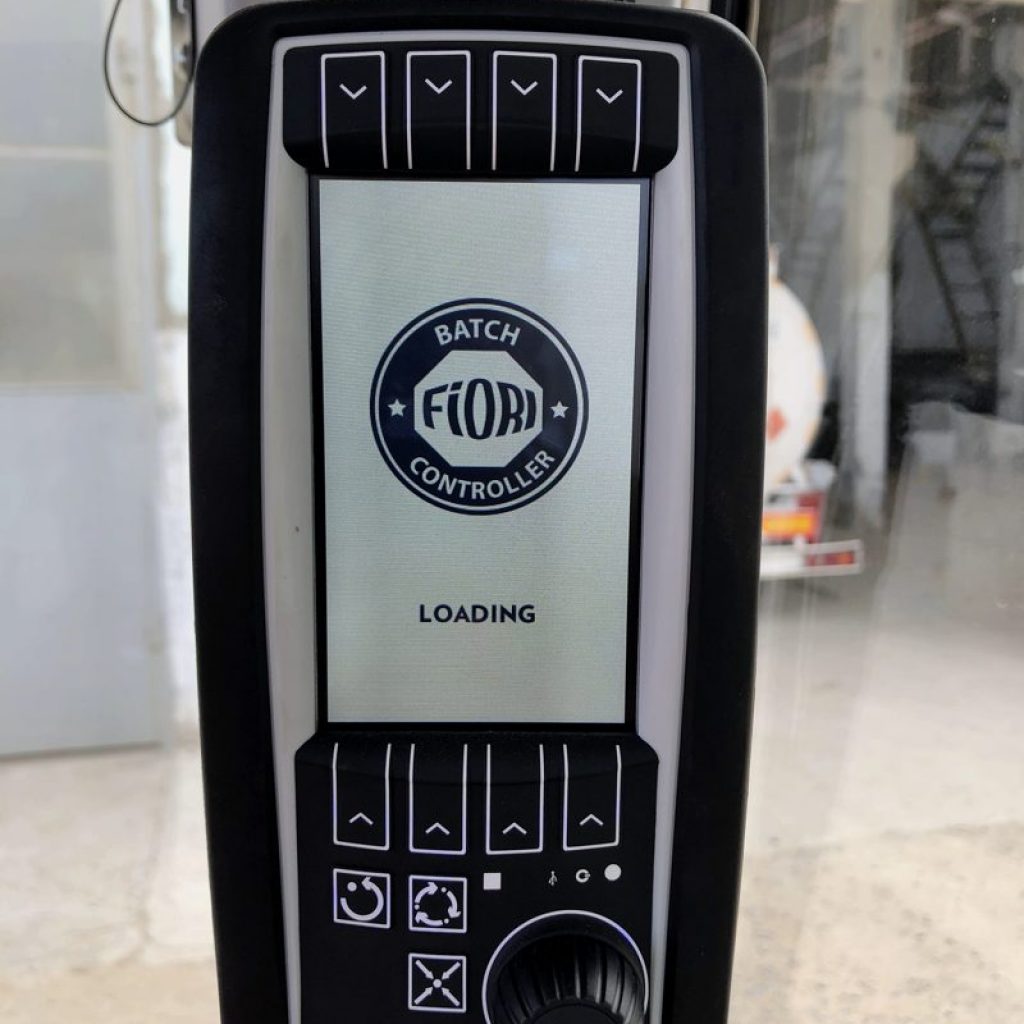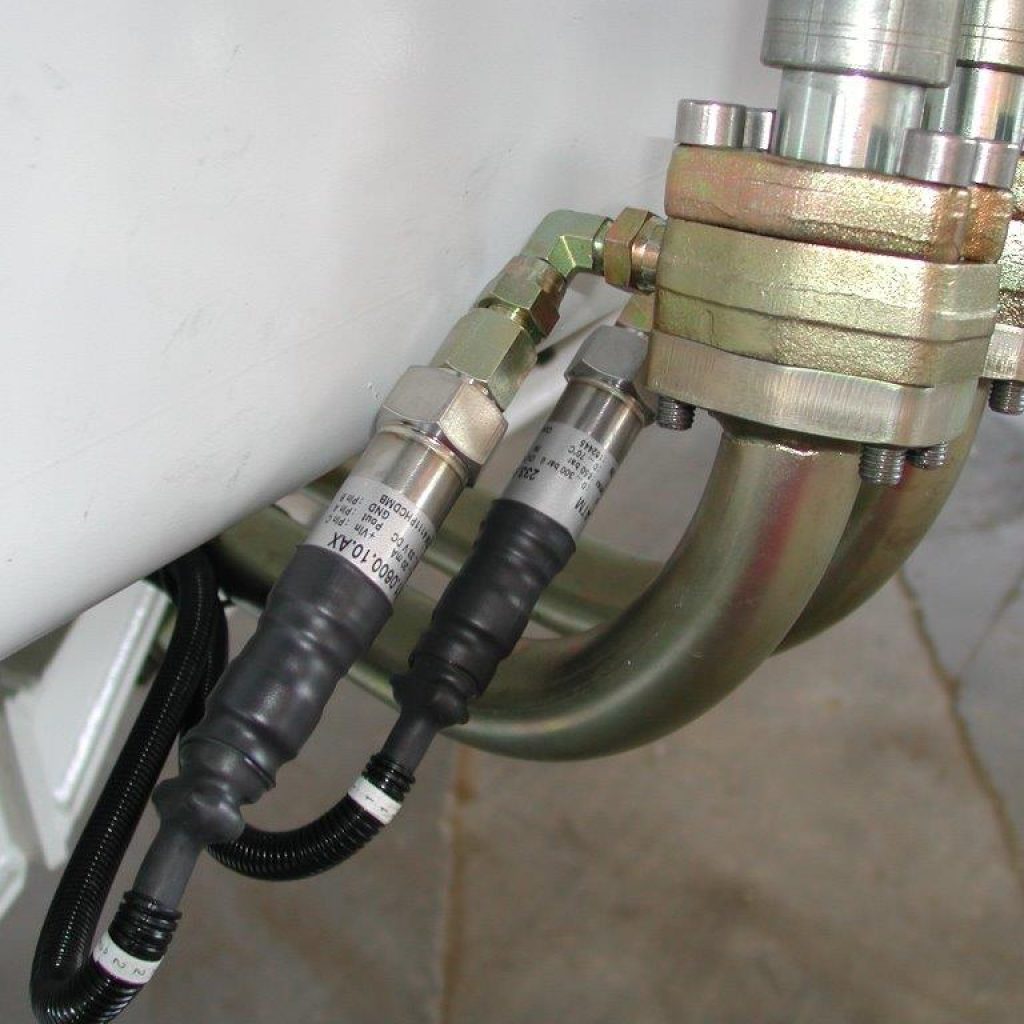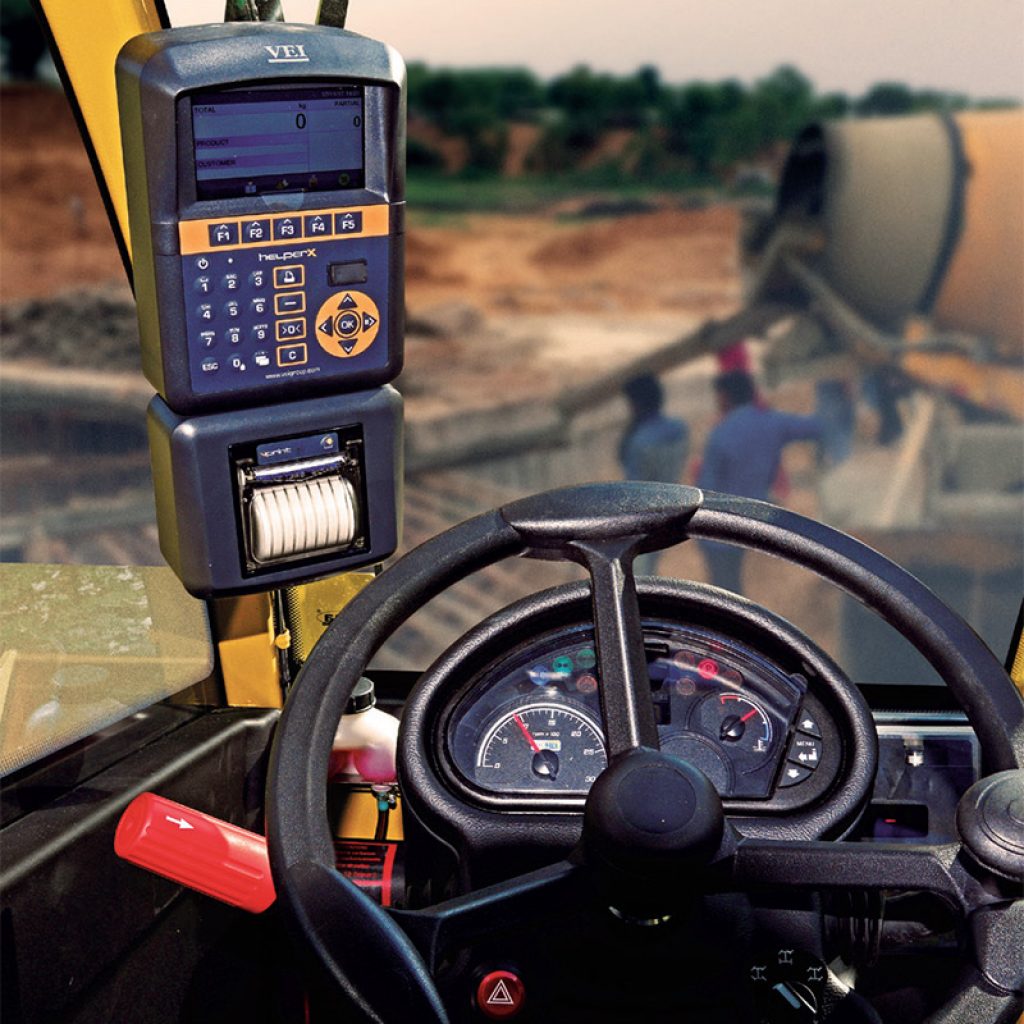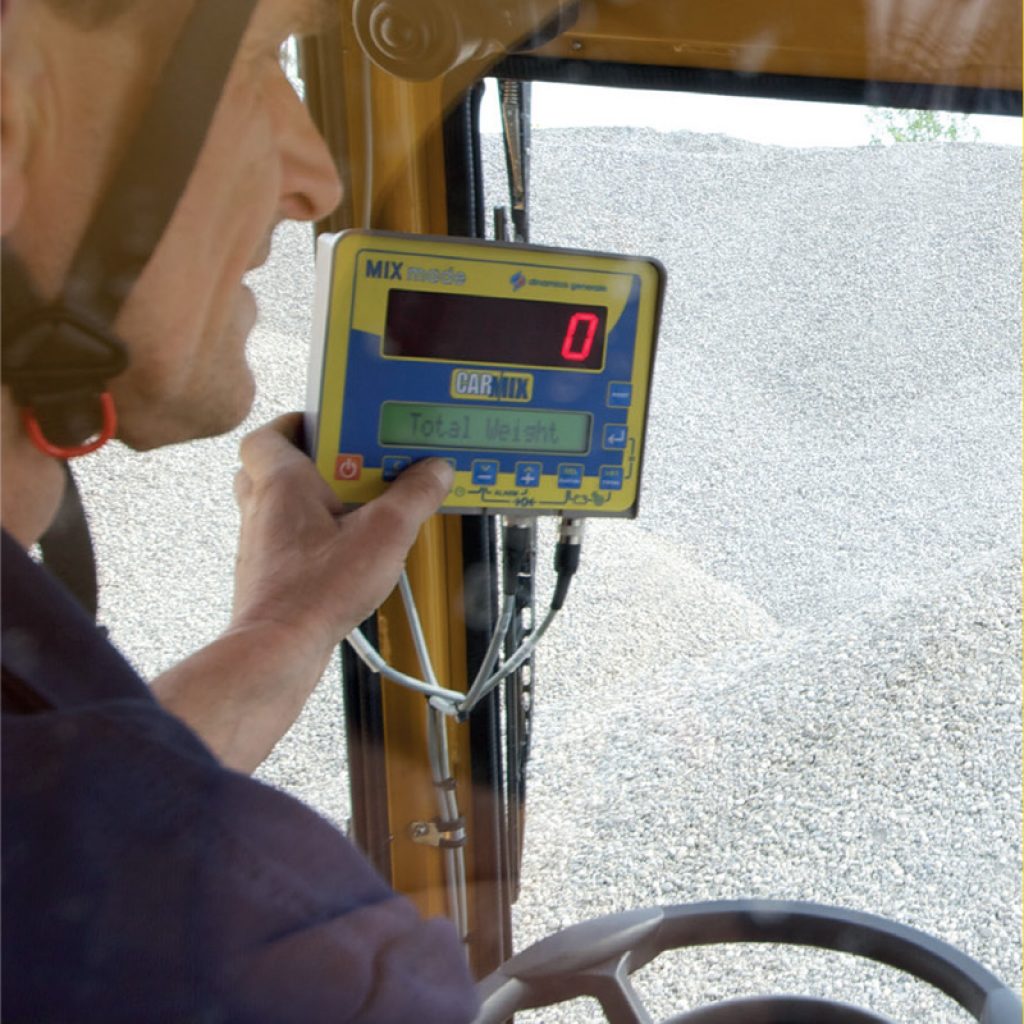Different weighing systems for self loading mobile batching plants
- Operation principle of weighing systems
- Advantages and disadvantages of hydraulic weighing system
- How does the strain gauge type weighing system work?
- Hydraulic weighing system VS strain gauge system
Which one is better – a hydraulic or strain gauge (electronic) weighing system?
If you want to get a concrete mixture with specified characteristics, it is necessary to use high-quality aggregates and batch them according to specific the recipe
On-board weighing systems are suitable for scale materials. It is installed on concrete machinery and measures the weight of loaded components. Such systems minimize the period required to prepare concrete mix by reducing the time required to load aggregates. This weighing system monitors the weight of concrete mix components already during the loading process.
Operation principle of such systems involves the load power which is recorded by special sensors and converted into electrical signal. Conversion takes place in two stages. Sensor body is deformed by mechanical force, then strain gauge converts this deformation into electrical signals.
Sensors for weight determining can be:
- hydraulic (installed in the hydraulic system)
- strain gauge.
In the first case, load is measured indirectly, because the sensor detects the oil pressure changing in the hydraulic system under influence of load. In the second case, sensors are installed under the drum and determine weight.
Hydraulic weighing system
Operation principle of hydraulic weighing system is based on measuring oil pressure in the lifting cylinder. This determines the weight of the load. Sensors are arranged in hydraulic system between the control section and lift cylinder.
Hydraulic weighing systems can be analog or digital-to-analog. Data from sensors in the hydraulic system is processed by control board and transmitted to on-board computer or control panel.

Hydraulic weighing system needs calibration. You have to measure pressure with an empty loader and then with full. It is impossible to convert pressure in a hydraulic system to a weight without this procedure. Sensor data must be taken in static, in a strictly defined position of the system.
Advantage of hydraulic sensors: they are not mechanically stressed and the weighing system is cheaper than strain sensor based systems. It is easy to repair and maintain in case of breakage. Given system also has a number of disadvantages:

Firstly – hydraulic oil system must be fully warmed up to have a working viscosity. Otherwise, weighing system will show weight with significant errors. Therefore, the hydraulic system must be constantly warmed up in winter and the temperature of the hydraulic fluid must be monitored.
Secondly – it is necessary constantly to monitor the quality of oil in hydraulic system and carry out regular maintenance with oil and filter replacement. Oil characteristics changes may also affect accuracy of weighing and concrete mix quality.
Thirdly – cement silos cannot be used in tandem with hydraulic weighing system (unless weighing system is installed on a cement silo). Weighing takes place in the bucket and cement loading from silo into the mixer drum directly will not allow the weighing to take place.
Fourthly – it is impossible to load water directly into the drum without a water meter, because the system will not allow dosing this component.
Strain gauge type weighing system
Principle of strain gauge system is based on determining deformation or other material parameters under mechanical stress. Strain gauges are resistors whose resistance changes when deformed.
Strain gauge converts the amount of strain into an electrical signal. This weighing system can be easily integrated into a digital control unit.
Strain gauges can be integrated or detachable.

Let’s compare the calculation accuracy of above mentioned weighing systems. Undoubtedly, strain gauges have the advantage – inaccuracy only up to 0.04%, hydraulic – 2%. In addition, accuracy of hydraulic system sensors can drop by up to 30% when moving.
Hydraulic weighing system is installed on the bucket cylinder to load materials. Since the “weighing” takes place only in a static condition, it is possible to estimate the weight of substances picked up after the bucket has been loaded in a certain position. This is more convenient than weighing components separately. However, such system leaves open the question of correcting the weight of loaded substances: how to remove excess or to add the needed volume?

Strain gauges determine weight of materials loaded directly into the mixer drum. If the loading is complete and there is some excess materials left in the bucket it is easy to unload them back and maintain high accuracy of the mix design.
Sensor data in the hydraulic system depend on many conditions: oil quality, condition of hydraulic system and ambient temperature. For example, errors will be very high at low temperatures. OIi temperature in hydraulic system must be at least 140 degrees Fahrenheit for proper operation. It can take a long time for the system to warm up in low temperatures.
CARMIX concrete mixers are equipped with “WINSCALE” electronic strain gauge weighing system. It measures the weight of material in the drum all the time. Thanks to the strain gauge system, operator can precisely control the loading process. When the desired weight is reached, operator simply needs to close the bucket gate and discharge the excess material back.
Strain gauge system under the drum allows to control concrete mix discharging: amount of discharged concrete and remainder in the drum.
Advantages of the strain gauge (electronic) weighing system include the following:
- High precision weighing with low error.
- Ability to work in dynamics and statics.
- Cement loading from all types of packaging: bags, bulk bags (loading directly into the drum), cement silos, cement trucks, bulk bags baggers, bulk type, etc.
- Possibility to load water directly into the drum without a water meter (especially important in winter with heated water), measurement of required amount of water is carried out not by volume but by weight: one liter of water = 1 kg.
- High degree of reliability and long service life.
- No influence of external factors on weighing accuracy.
- Ability to control accuracy of loading at all mixing stages and discharging of concrete.
- Ability to operate in winter, without loss of accuracy in aggregates weighing process.
- No additional costs for maintenance during operation.

